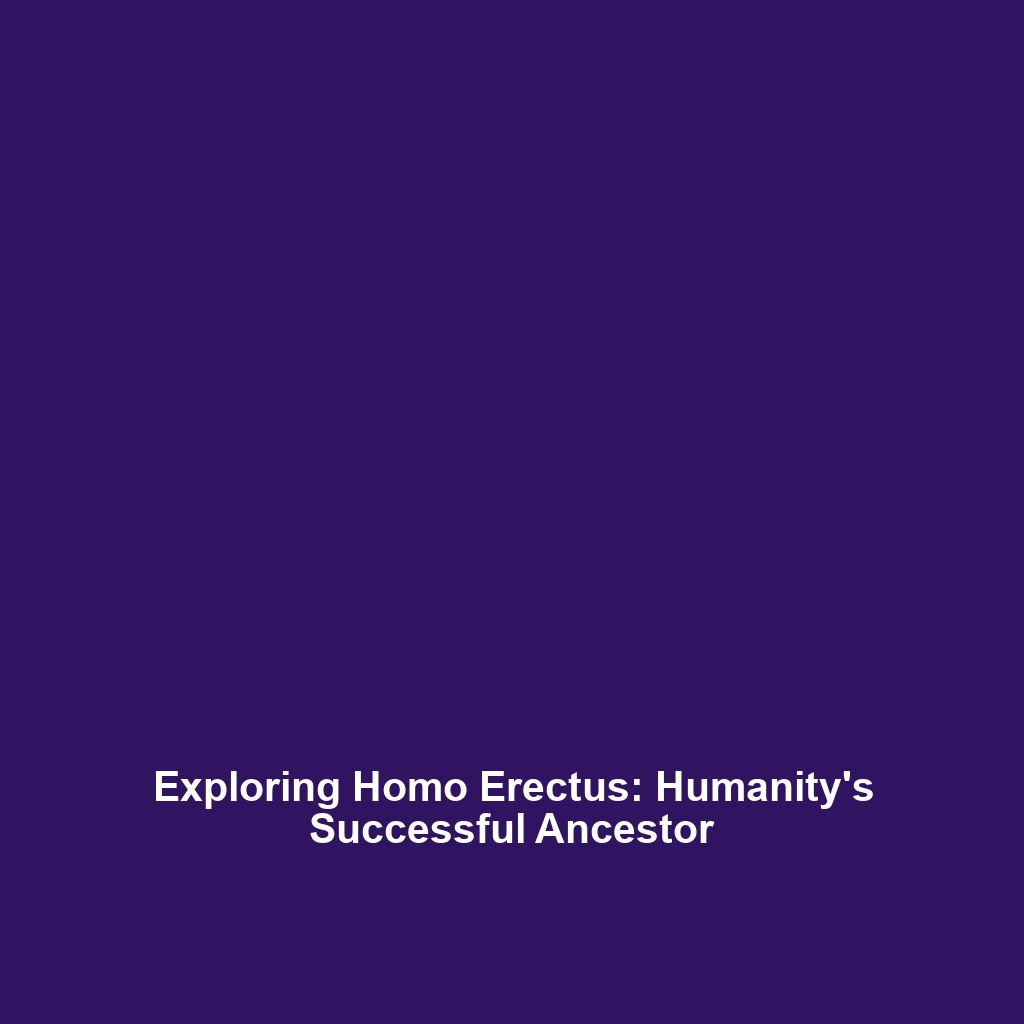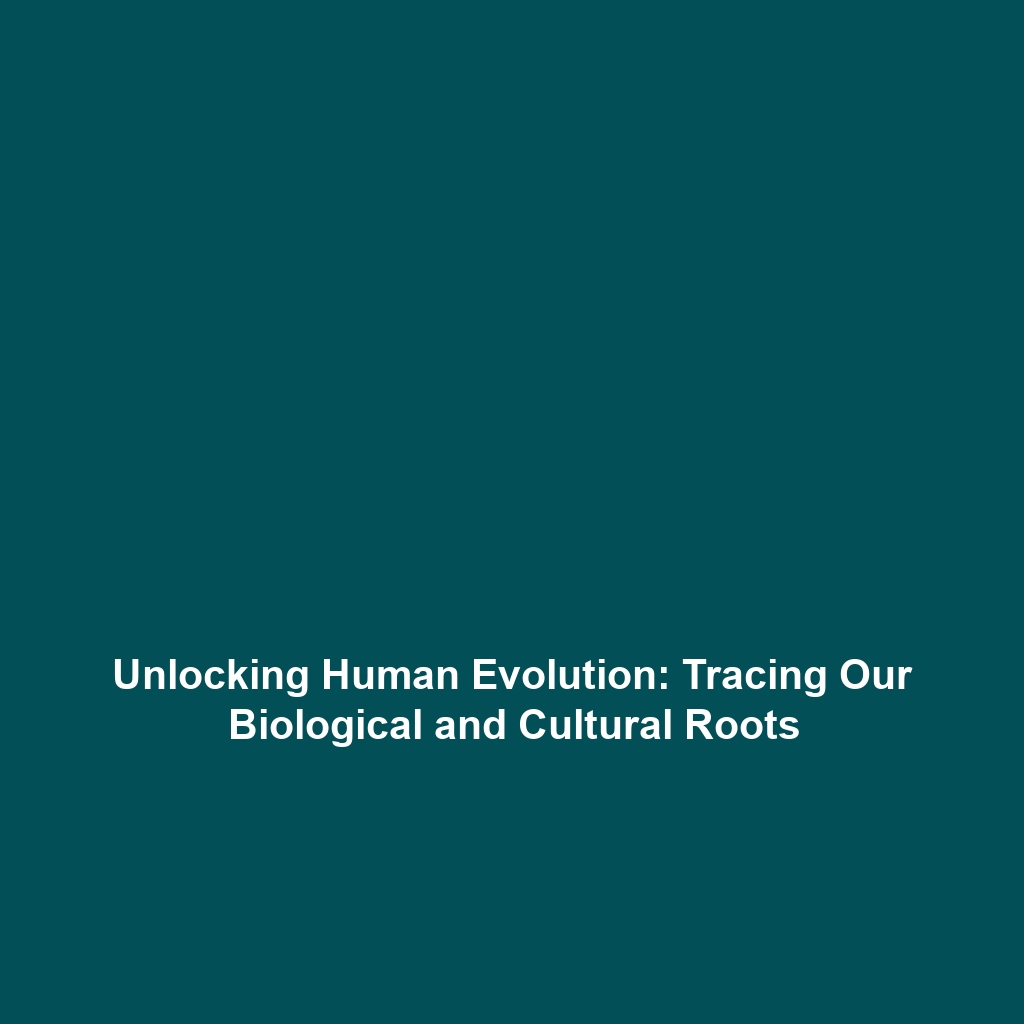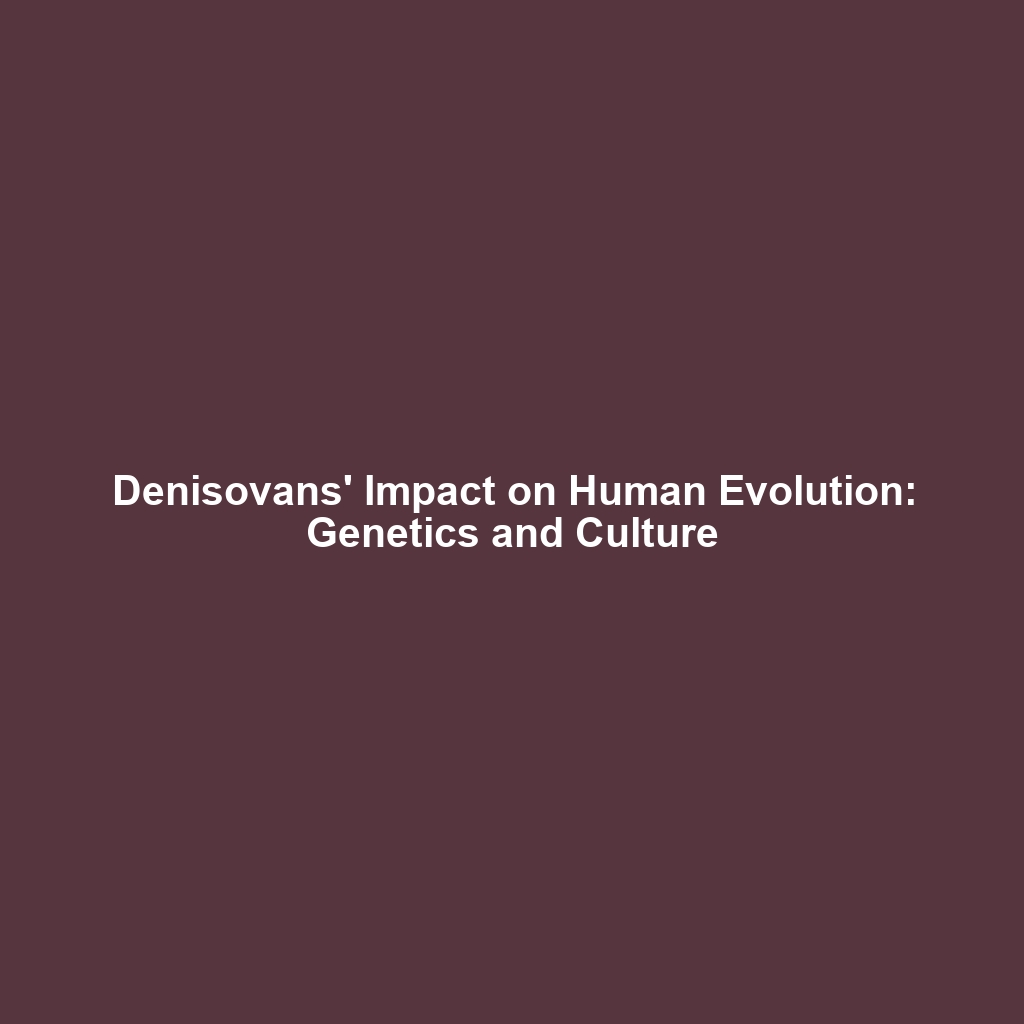One of the Most Successful Early Human Species: A Significant Chapter in Human Evolution
The study of human evolution unveils a diverse tapestry of species that have shaped our lineage. Among them, one of the most successful early human species lived from approximately 1.9 million to 110,000 years ago. This species not only thrived during a time of vast environmental changes but also exhibited remarkable adaptive strategies that allowed them to survive and evolve. Understanding their significance can provide crucial insights into the broader context of human evolution.
Key Concepts of One of the Most Successful Early Human Species
As we delve into the key concepts associated with this remarkable early human species, several principles stand out:
- Adaptation: This species demonstrated advanced tools and strategies to adapt to various environmental challenges.
- Social Structure: Evidence suggests that they had complex social interactions, which played a vital role in survival.
- Cognitive Abilities: Their cognitive skills reflected an understanding of their environment, enabling them to innovate and collaborate effectively.
These factors contributed immensely to their longevity and are pivotal in our understanding of human evolution.
Applications and Real-World Uses
Studying one of the most successful early human species offers various real-world applications:
- How Early Human Behavior is Used in Anthropology: Understanding their behavioral patterns aids in explaining human social structures today.
- Applications of Tools: Insights into their tool-making techniques can inform modern innovations in design and manufacturing.
- Conservation Efforts: Their adaptation strategies can guide contemporary conservation measures in changing environments.
Current Challenges in Studying Early Human Species
Despite significant advancements, challenges remain in studying this early human species:
- Scarce Fossil Records: Limited fossils hinder comprehensive analysis.
- Interpretation Issues: Different interpretations of archaeological findings can lead to conflicting theories.
- Funding and Resources: Ongoing research often faces limitations due to inadequate funding.
Future Research and Innovations
Looking ahead, several exciting avenues of research are emerging:
- Next-Generation DNA Analysis: Advances in DNA retrieval methods from ancient artifacts could unlock secrets about this early human species.
- Technology Integration: Utilizing AI and machine learning to analyze data can enhance our understanding of behavioral patterns.
- Interdisciplinary Approaches: Collaborations across fields such as genetics, archaeology, and anthropology will provide a holistic perspective.
Conclusion
In conclusion, one of the most successful early human species, existing from around 1.9 million to 110,000 years ago, plays a crucial role in our understanding of human evolution. Their adaptability and social structures continue to inspire research and innovation today. For further reading on related topics, consider exploring our articles on human adaptation strategies and recent archaeological discoveries.



